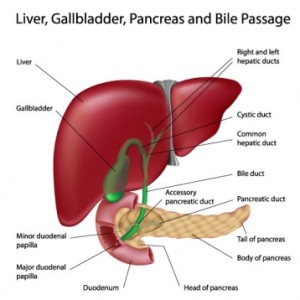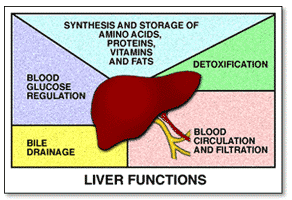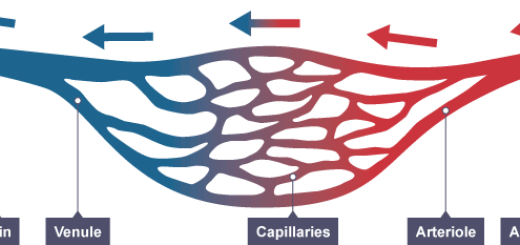A guide to the Liver for first aiders (Anatomy & Physiology)
The liver is the largest gland and solid organ in the body, weighing approximately 1.8 kgs in a men and 1.3 kgs in women.
It holds about 13 per cent (about one pint or 0.57 litres) of the total blood supply at any given moment and it has over 500 estimated functions.
The liver is dark reddish brown in colour and is divided into two main lobes which are further subdivided into approximately 100,000 lobules. About 60 per cent of the liver is made up of liver cells (hepatocytes), and each of these have an average lifespan of 150 days.
Two-thirds of the body of the liver is the parenchyma, which contains the hepatocytes, and the remainder is the biliary tract.
The liver receives its blood supply via the hepatic artery and portal vein.
The biliary tract contains the right and left hepatic ducts, which meet to form the common hepatic duct. This is joined by the cystic duct from the gall bladder, which then forms the common bile duct.
The gall bladder is a pear-shaped bag 9cm long with a capacity of about 50ml. Breakdown products, such as bile salts, bilirubin, cholesterol, phospholipids, proteins, electrolytes and water are secreted by hepatocytes and they are transported down the bile ducts.
The gall bladder stores bile, a greenish-yellow coloured liquid, which is de- livered during a meal into the intestine to assist with the breakdown (emulsifying) of fat in the food digested to allow easier absorption of fat and vitamins A, D,E and K.
The functions of the liver
There are more than 500 functions of the liver but some of the main ones are:
- processing digested food from the intestine;
- controlling levels of fats, amino acids and glucose in the blood;
- combating infections in the body;
- clearing the blood of particles and infections;
- neutralising and destroying drugs and toxins;
- manufacturing bile;
- storing iron, vitamins and other essential chemicals;
- breaking down food and turning it into energy;
- manufacturing, breaking down and regulating numerous hormones including sex hormones;
- making enzymes and proteins which are responsible for most chemical reactions in the body.
Common liver diseases
The liver is a very uncomplaining organ with an enormous reserve. Most liver disease is symptomless and when there are symptoms they are often vague.
Common diseases include:
Hepatitis literally means inflammation of the liver. Viruses are the commonest cause but there are others which are non viral, such as alcohol excess, the side effects of some drugs, both illegal and prescribed medicines.
Cirrhosis is a result of long term continuous liver damage. If the liver is damaged for a short time some of the cells die and the liver regrows to its original size and shape. When the inflammation is severe and continuous, scar tissue called fibrosis develops. Smooth liver tissue is replaced by irregular nodules and the liver becomes much harder than normal. The combination of nodules and fibrosis is called cirrhosis.
Gallstones are lumps of solid material that form in the gallbladder and usually resemble small stones or gravel, although some can be as large as pebbles.
Cancer of the liver is divided into two main types: Primary Cancer (hepatocellular carcinoma) which means cancer that starts in the liver, and Secondary or Metastatic Cancer which means cancer that spreads to the liver from another part of the body.






